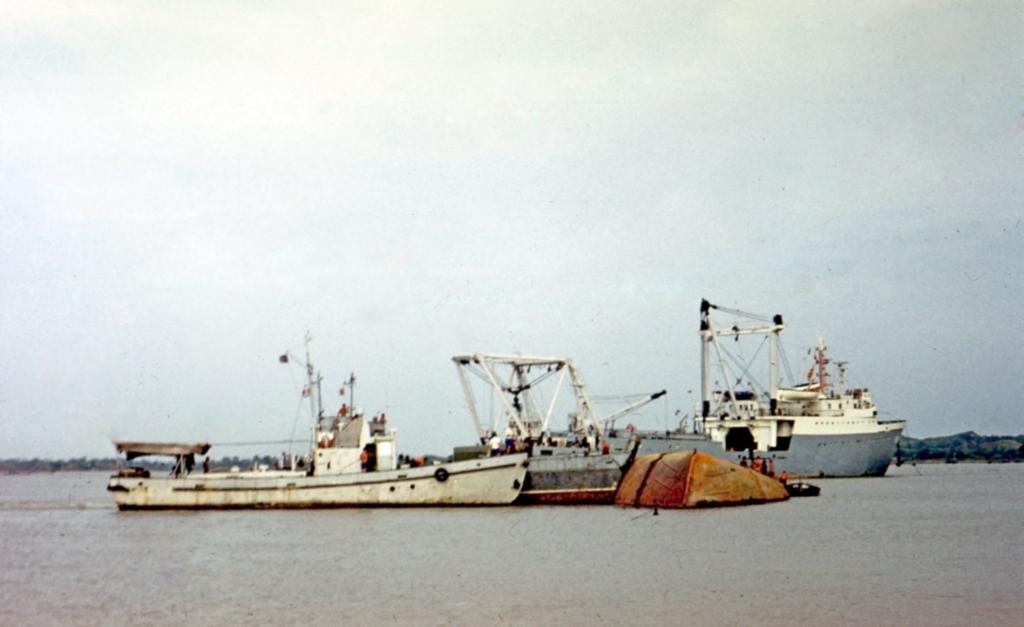When Bangladesh gained independence after the Liberation war, the national economy was in ruins. The Chittagong port, a vital artery for the supplies of humanitarian and commercial goods, was especially affected. Its fairway was blocked for passage by numerous mines and sunken ships; most berths were inaccessible.
In January 1972, the leadership of Bangladesh appealed to the UN for help in restoring navigation in its ports. A Singapore-based company specializing in marine rescue operations, engaged by the UN as an expert, estimated that such work would cost at least six million dollars. Although the required amount was provided by the Swedish government, the negotiations with private ship-lifting companies took too much time.
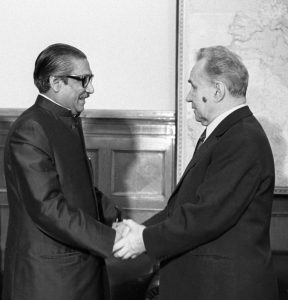
Meanwhile, similar negotiations were underway between Dhaka and Moscow. On March 3, 1972, in Moscow, Sheikh Mujibur Rahman approached Communist Party Secretary General Leonid Brezhnev and Defense Minister Grechko with a request to assist in clearing the port of Chittagong of mines and submerged ships. On March 6, the Soviet Pacific Fleet command received an urgent directive to prepare a special expedition. The respective bilateral agreement was concluded on March 22, where the USSR pledged to clear the Chittagong fairway of mines and lift 17 ships in the port (later this number was increased to 26), on purely humanitarian grounds, with no financial obligations for the young Bangladesh state. According to Western experts, it would have taken three to five years to complete the task. The Special Purpose Expedition (SPE) under the command of Rear Admiral Sergei Zuenko had the work done in 26 months.
On April 2, 1972, the first SPE ship – the floating workshop – entered the port of Chittagong through a narrow safe channel. Overall, the expedition consisted of 24 ships, including four sea minesweepers, six smaller minesweepers, one rescue vessel, four sea tugs, one tanker, one floating crane with the 100 tons handling capacity (later joined by two custom-made heavy-duty 800 tons cranes), one echo sounder, and storm boats. More than 1500 Soviet sailors were engaged at those massive works.
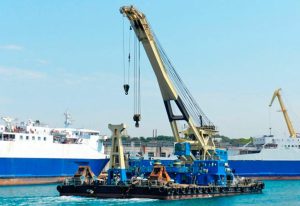
When the Soviet specialists first saw the Chittagong port, it made a heavy impression. Most of the piers had masts, pipes, superstructures of sunken and damaged ships sticking out of the water, some ships were lying on their sides. Overall, there were more than 50 different damaged vessels. Out of 18 berths, 12 were inoperable for various reasons. Ruined warehouses were everywhere. Very few vessels would venture entering the port at that time.
May 2, 1972 saw the beginning of minesweeping, and on that day, the first mine was located and destroyed. The minesweepers would cut an underwater mine from its steel anchor ropes, and once the mine comes to the surface, they would shoot it to eliminate. However, muddy water, shallow depth, shipwrecks, and numerous fishing vessels made this dangerous task even more difficult. Soviet sailors did not even have the clear understanding about the extension of minefields.
Nevertheless, by the end of July 1972, the fairway was expanded to three miles; 50% of the minefields were destroyed. By the end of October 1972, the entire harborage of 1000 square miles was swept. Formerly dangerous areas were finally open for navigation for ships with 8-meter draught. Regular control minesweeping continued till March 1974, when the Soviet minesweepers triumphantly left Bangladesh for the home port.
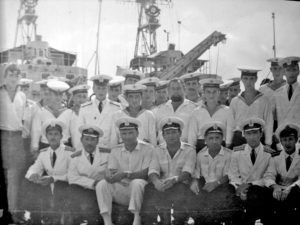
The operation to clear the fairway from sunken ships and restore mooring capacities started on April 23-27, 1972, when Soviet tugboats moved three damaged ships – Anis Baksh, Karnaphuli and Al-Abbas – to the ship-cutting area and provided access to the three major berths of the port.
The ship lifting turned out to be a laborious and time-consuming task, which required great creativity and inventiveness, apart from vast technical skills, and individual approach with every particular ship. First, the divers explore a submerged vessel to get general impression of its position, damage, etc. Then they roll out related documents and drawings to finally work out the entire lifting procedure. Depending on many factors, the preparation stage could take days, weeks or even months, while the lifting itself takes sometimes just a few hours.
For example, the lifting of the 1100 tons Sonartari vessel, which was obstructing the passage in the fairway, took sixteen months, from May 1972 to August 1973. The massive Avlos tanker, which drowned at the distance of 30 meters from the shore and was an upsetting sight for Chittagong residents, presented another herculean task for Soviet sailors. The leaking oil from its tanks made the surfaces very slippery and hard to work on. Its lifting operation that lasted a year, become a valuable experience for Soviet specialists and prompted them to venture many innovative techniques.
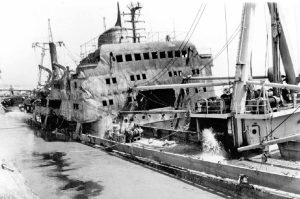
The specific Karnaphuli River whose current changes direction four times a day with the velocity of 6 knots, defined the timetable for Soviet sailors. They called the time between the tides a “stop water” period which lasted only 1,5-2 hours. The zero-visibility underwater taught Soviet divers to work blindly and by touch.
The divers’ work was physically very challenging. When a diver resurfaced, his diving suit was full of water, although there were no ruptures or breaks of any kind. Finally, the doctors identified the reason – the water was the human sweat. Each diver would lose up to two kg from every immersion.
Unfortunately, one sailor – 22-year old Yuri Redkin – died on duty. A memorial in his honor, widely known as Redkin Point, is located in the premises of the Naval Academy in Chittagong.
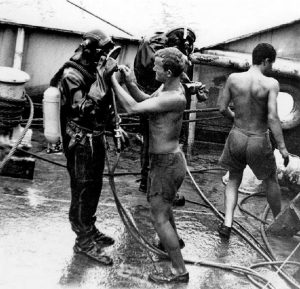
In May 1974, the heavy-duty crane lifted and put on the shore the last 300-tons section of Surma steamship. It was the last vessel that obstructed the normal functioning of the Chittagong port. With this, the Soviet expedition completed the ship-lifting work. From April 1972 to June 1974, Soviet sailors lifted 26 ships with overall displacement of 100 thousand tons. Some of the ships even dated back to the XIX century! Twelve port berths were cleared for mooring; some lifted ships were handed over to the Bangladeshi side for restoration, while others were sent for cutting. The Expedition helped to completely restore Bangladesh external maritime communications and significantly increase the pre-war level of the port cargo turnover.
From February to June 1974, Soviet sailors also trained 44 Bangladeshis for rescue operations and handed over one storm boat, two diving boats, eight ship-lifting pontoons, seven pumps and various diving equipment.
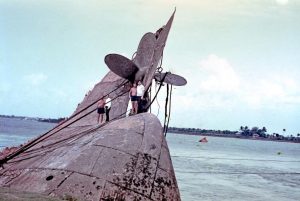
The Government of Bangladesh highly appreciated the feat of Soviet sailors. The young Republic did not have yet its own awards. Still, it decided to award all SPE-12 participants with commemorative medals. Legend goes that those medals were made from the bronze screw of the raised Surma steamship. In 2020, a stele commemorating the feat of Soviet sailors was unveiled in one of the central parks of Chittagong.
In December 2024, few veterans of this glorious Special Purpose Expedition took part in the Victory Day celebrations on the invitation from Bangladesh Government. They were mesmerized by the progress made by Bangladesh over 50 years and felt proud that they managed to contribute to the very early days of this development journey.
Russia deeply appreciates that Bangladesh Government and common people remember the political support of the erstwhile Soviet Union extended to Bangladeshi freedom fighters in the international arena and the grandiose minesweeping and clearing operation conducted by Soviet sailors in the port of Chittagong in 1972-1974.
Written by-
H.E. Mr. Alexander Mantytskiy
Ambassador Russia to Bangladesh

